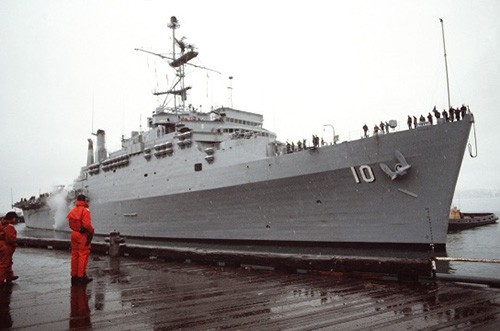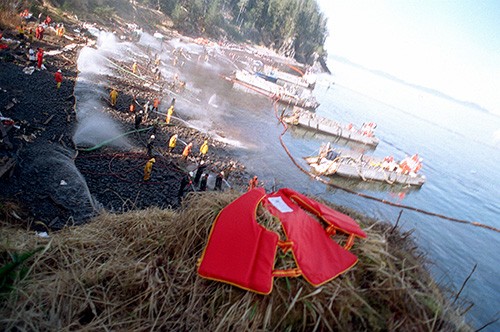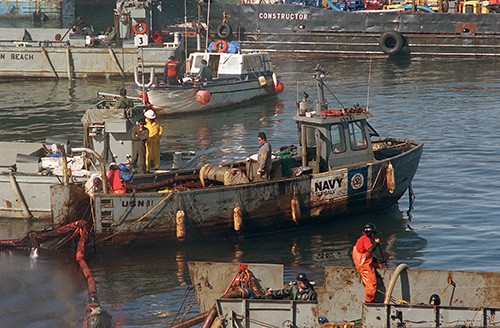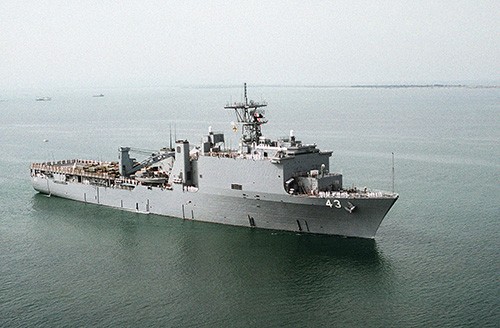April - August 1989 - Exxon Valdez Oil Spill

Caption:
Following the Exxon Valdez oil spill in Prince William Sound, Washington, on March 24, 1989, U.S. Navy amphibious ships USS Juneau (LPD-10) and USS Fort McHenry (LSD-43) supported oil clean-up efforts. The ships operated as floating hotels for members of the clean-up crew and acted as the command centers for the clean-up effort from April to August.

Caption:

Caption:

Caption:
Published: Thu Apr 30 12:14:26 EDT 2020



